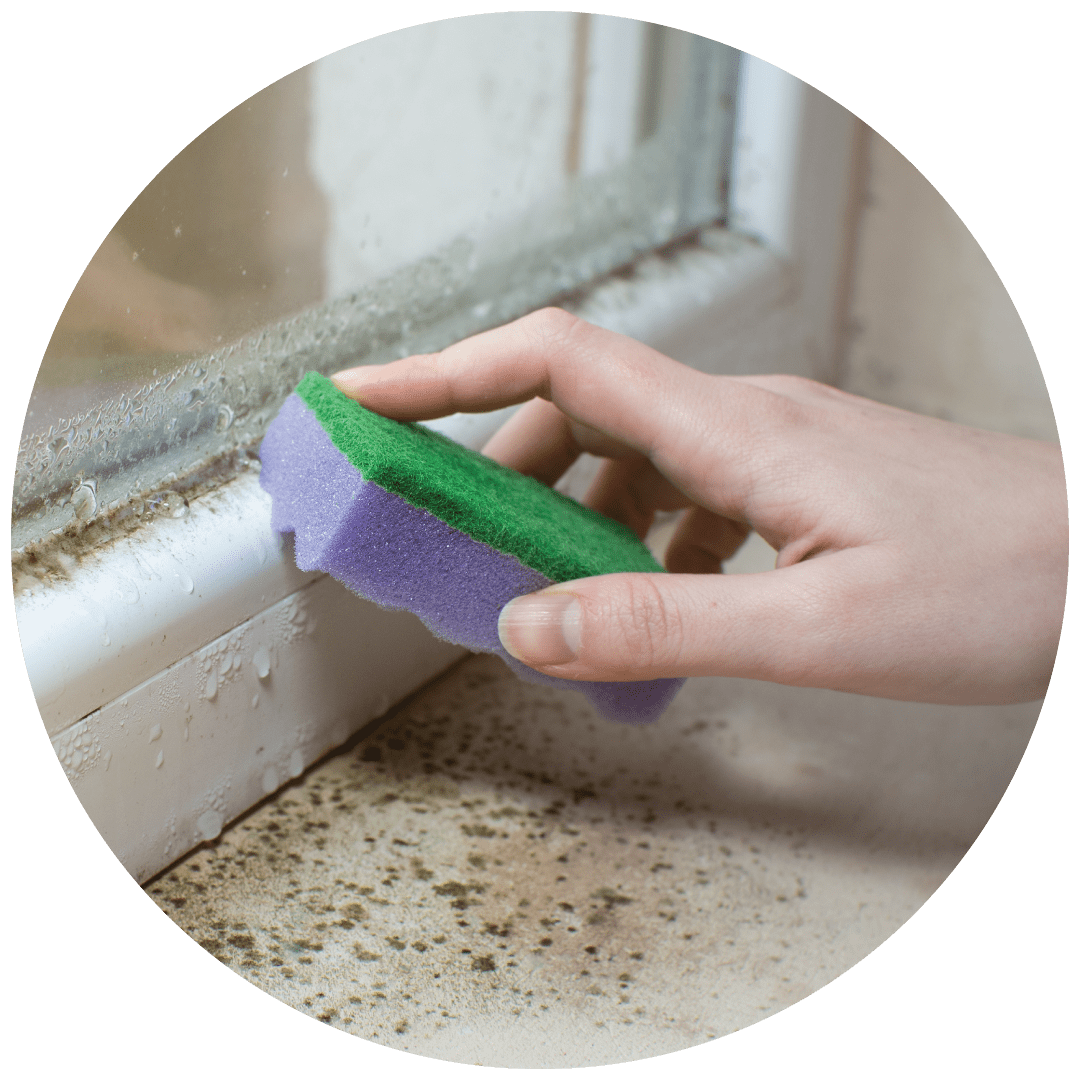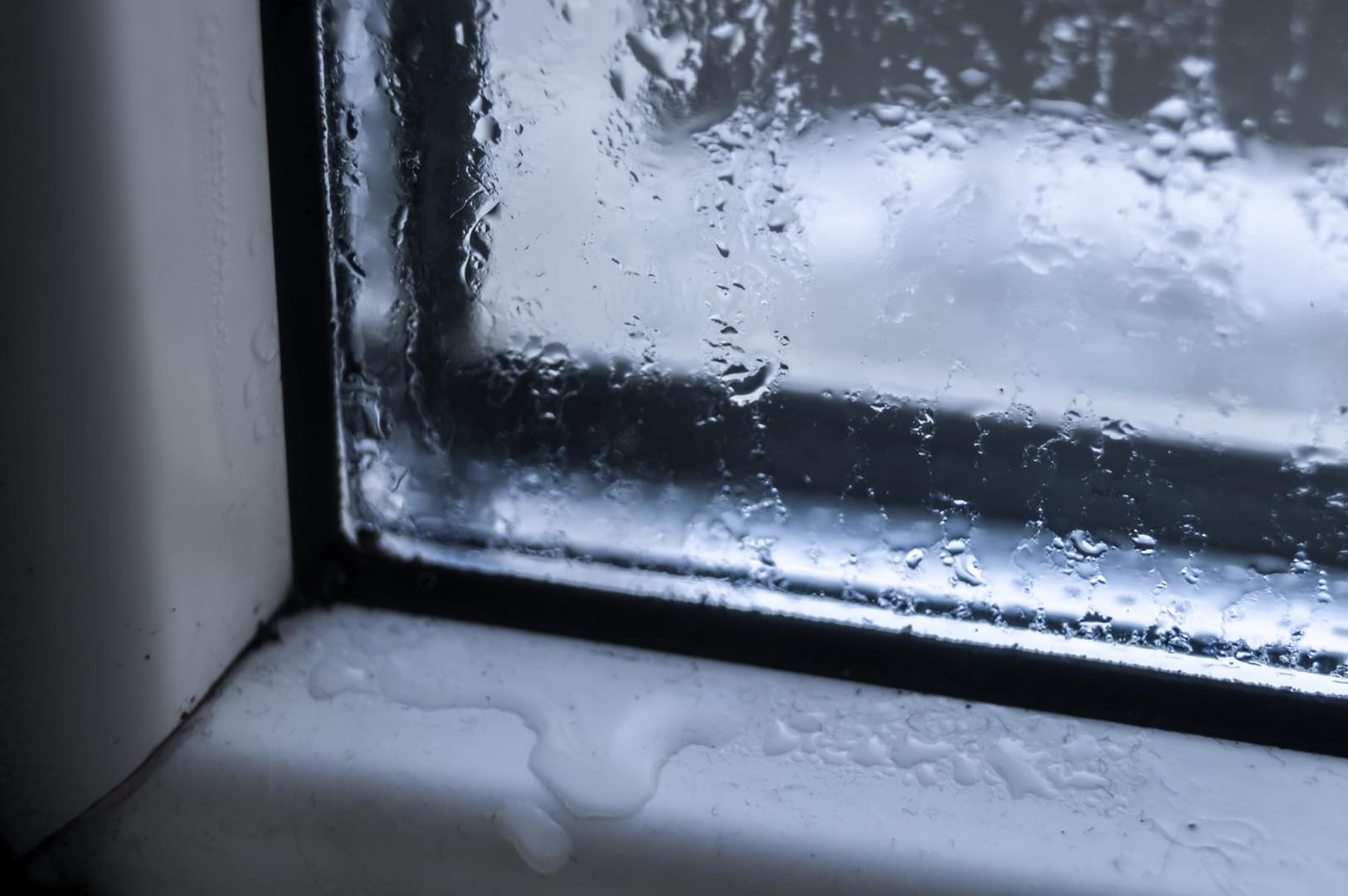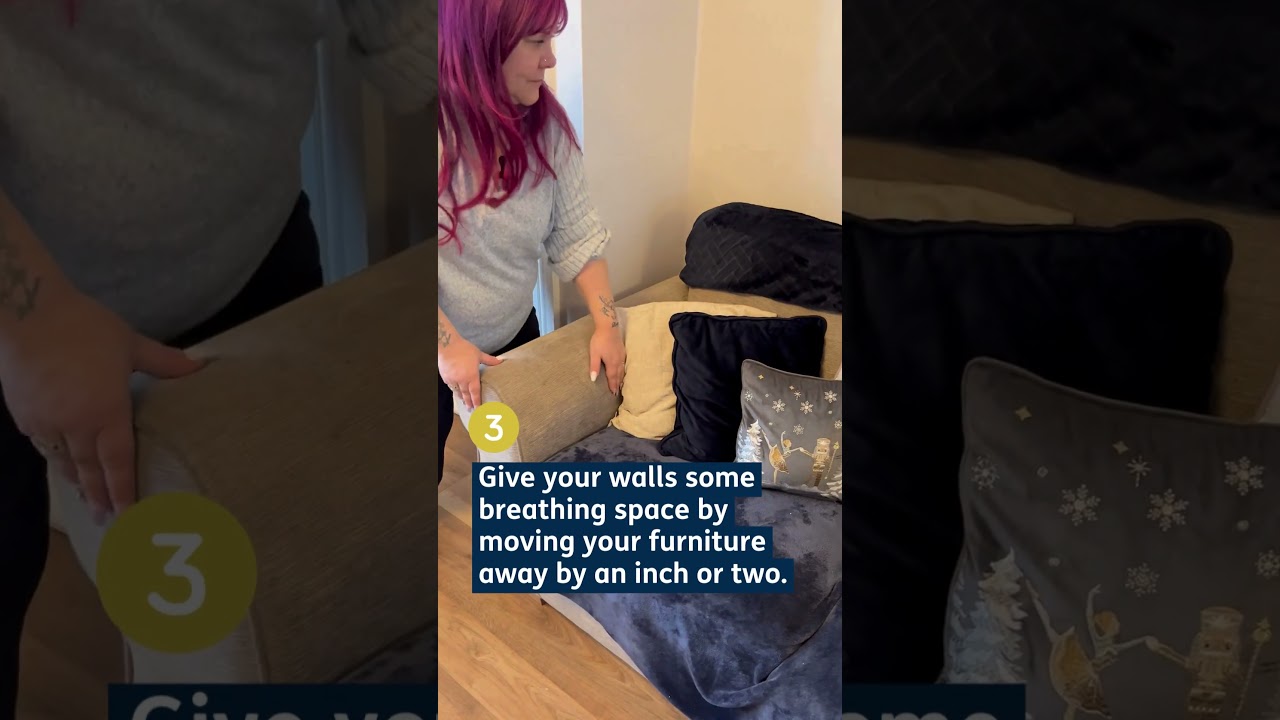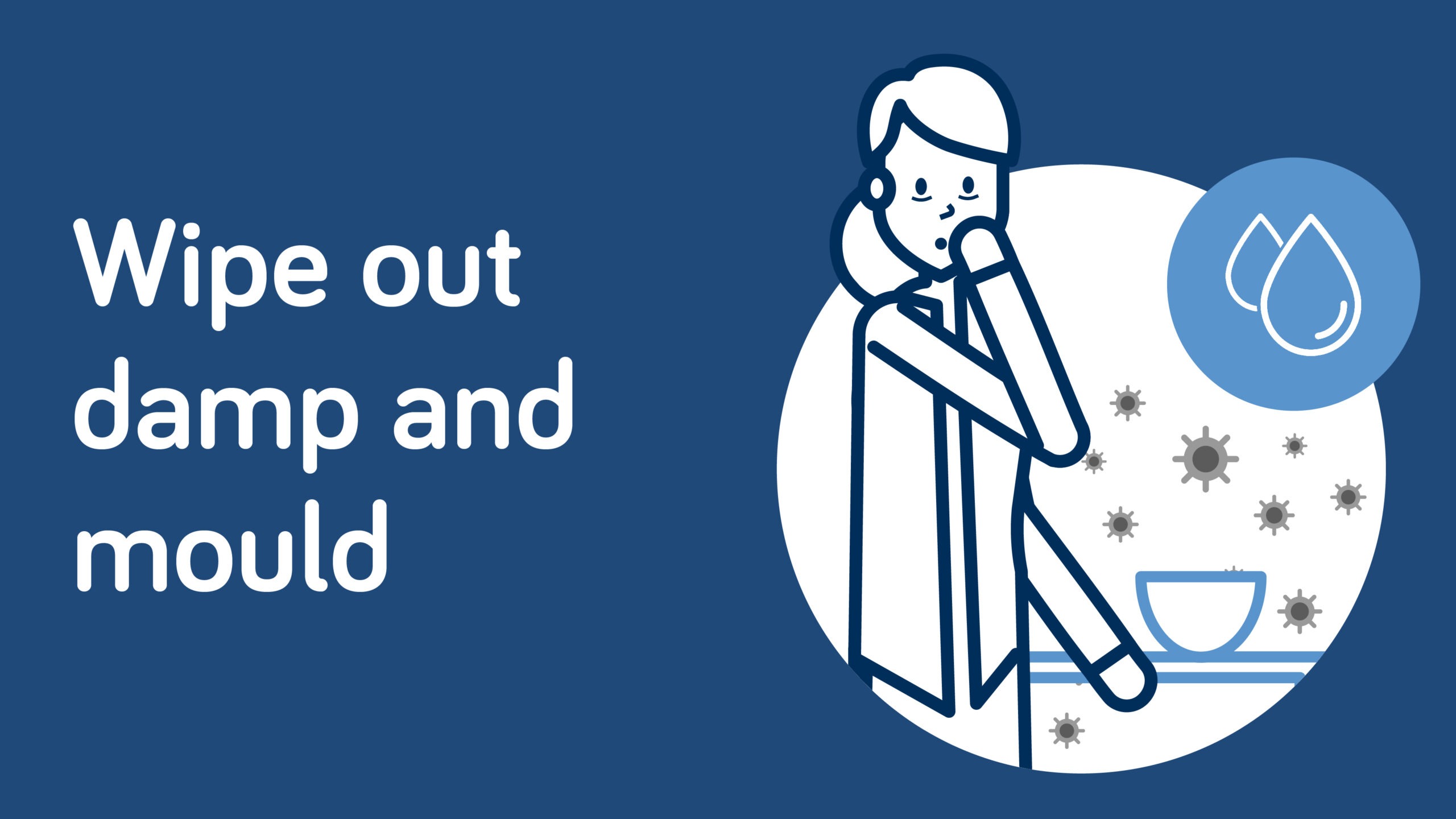
Damp and mould
We know that damp and mould is a big concern for our customers and can seriously affect your enjoyment of your home.


What to do if you spot damp or mould in your home
- Report it to us as soon as possible online or by calling 0300 555 6666.
- Our team will speak to you to find out
more about the problem. If we can identify
the cause easily over the phone (e.g. broken
guttering), we’ll arrange a repair. - If the cause is not so clear, it can take a process of elimination to identify the problem.
In most cases we will ask you to follow the steps in our damp and mould guide for 28 days to see if they resolve the issue.
If there is no obvious improvement we will
arrange for a surveyor to come and inspect
your home.
What causes damp and mould?
We understand that no one would choose to live in a home that has damp and mould, and we will work with you to find a solution to manage or eliminate these issues.
In a lot of cases, damp and mould is caused by one of these four problems:
Broken or blocked guttering
Drainage issues
Leaking pipes
Excess condensation
We take all reports seriously. If there is a risk to safety or health a surveyor visit will be arranged as soon as possible.
FAQs
What should I do if I discover damp or mould?
If you discover damp or mould it’s really important that you let us know so we can work with you to resolve the problem. Give us a call on 0300 555 666 or report it online.
Dealing with damp and mould.What can I do to get rid of damp and mould?
To kill and remove mould, wipe down or spray walls and window frames with a fungicidal spray or mould killer that carries a Health and Safety Executive (HSE) ‘approval number’, and ensure that you follow the instructions for its safe use. You can get these from local supermarkets, or we can provide one for you. Dry-clean mildewed clothes, and shampoo carpets. Do not try to remove mould by using washing up liquid, bleach or vacuum cleaner.
How do I know if my mould is due to condensation or damp?
It is not always easy to tell but there are some key differences between condensation and other forms of damp. Condensation is usually found on north facing walls. It can also be found on or around windows and in areas where there is not much air movement, such as corners or a room, in cupboards or behind furniture. It is more likely to leave black mould. Other kinds of dampness, such as rain or plumbing leaks, usually leave a stain mark.
What causes condensation?
Condensation happens when moisture in warm air comes into contact with a cold surface and turns into water droplets. This happens more in rooms where there is a lot of moisture, such as in bathrooms and kitchens, or in rooms where there are a lot of people. Our everyday activities add extra moisture to air inside our homes – for example just one person sleeping can add half a pint of water to the air overnight.
How can I reduce the amount of condensation in my home?
You can reduce the amount of water produced in your home by keeping lids on saucepans while cooking and drying clothes outside when possible. We realise that this is not always possible. If you do dry clothes indoors try to limit this to the bathroom, with the door closed and extractor fan in use or window open on vent – also do this when you have a shower. If you use a tumble dryer, make sure it’s vented to the outside. Contact us for advice if your dryer does not have an outdoor vent.
What is the best way to ventilate my home?
The simplest way to bring in fresh air is to open your windows and doors. You should also keep window vents open to allow moisture to escape and use your extractor fans. Tell us if they’re not working, or if you don’t have a fan in your bathroom or kitchen, as we may be able to fit one for you.


